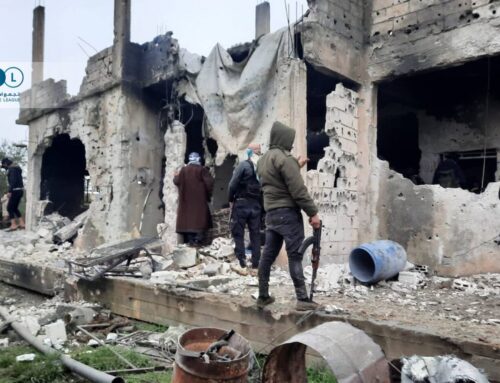Activist: Fitna contributed to fall of Homs
May 19, 2014 After nearly three years of fighting, rebels […]
19 May 2014
May 19, 2014
After nearly three years of fighting, rebels surrendered the 13 besieged neighborhoods of Old Homs to regime forces during the week of April 28th. The truce stipulated that rebel fighters and residents be allowed safe passage out of the besieged areas in exchange for handing over 70 prisoners to the regime.
The agreement shifted the regime’s focus to al-Waer, Homs’s most populous district and the last rebel holdout in the area. As of Sunday, government shelling of the area had not let up.
In order to push rebels to sign the truce in Old Homs, says Khudair Kheshfeh, 26, a prominent opposition activist, the regime pounded the area with artillery and barrel bombs, while using starvation during the nearly two-year siege.
“Besieged residents started eating beetles, frogs and grass,” says Kheshfeh, who earlier this year relocated from Outer Homs and now operates between northern Syria and southern Turkey.
The regime succeeded in infiltrating rebel-controlled Homs, Kheshfeh tells Mohammed al-Haj Ali, by plotting assassinations and sowing discord among the rebels: what he calls”the most dangerous weapon of all.”
Q: Do you think that starvation and malnutrition in Old Homs forced rebel fighters to accept the truce?
There are several reasons fighters accepted the truce in Homs, among them a lack of food; besieged residents started eating beetles, frogs and grass. In eight reported cases, individuals died because of poisoning from eating grass. Food was one reason for the truce, but it was not the main one.

Q: Was starvation the only weapon the regime used to pressure the besieged people of Homs?
Starvation was not the only weapon that Assad used to put pressure on the besieged people of Homs. There are other reasons they accepted the truce, among them the 700-day, suffocating blockade and continuous shelling by the regime’s air force, surface-to-surface missiles and barrel bombs. Lately, the regime began sowing fitna, using people who wanted to clear their names; this was the most dangerous weapon of all, to be honest. The regime drove a wedge between those from the city and Outer Homs, which hindered a number of attempts to break the siege from the outside; to say nothing of the regime’s sleeper cells in countryside locales, usually considered safe areas.
Q: From a military standpoint, why did the rebels surrender?
The blockade stopped the flow of heavy weapons into the city; rebels could only use weapons that were already here. Secondly, there were relatively few fighters compared with the large area they controlled, 13 neighborhoods under siege.
Finally, recent assassinations played a role, which indicated that the regime had infiltrated the besieged areas. [Ed.: Here, Kheshfeh charges regime forces with the assassinations of local activists in addition to the killing of Father Frans, the elderly Dutch priest who was murdered after publicly criticizing the regime’s blockade of Old Homs.]
For more from Syria Direct, like us on Facebook or follow us on Twitter.







